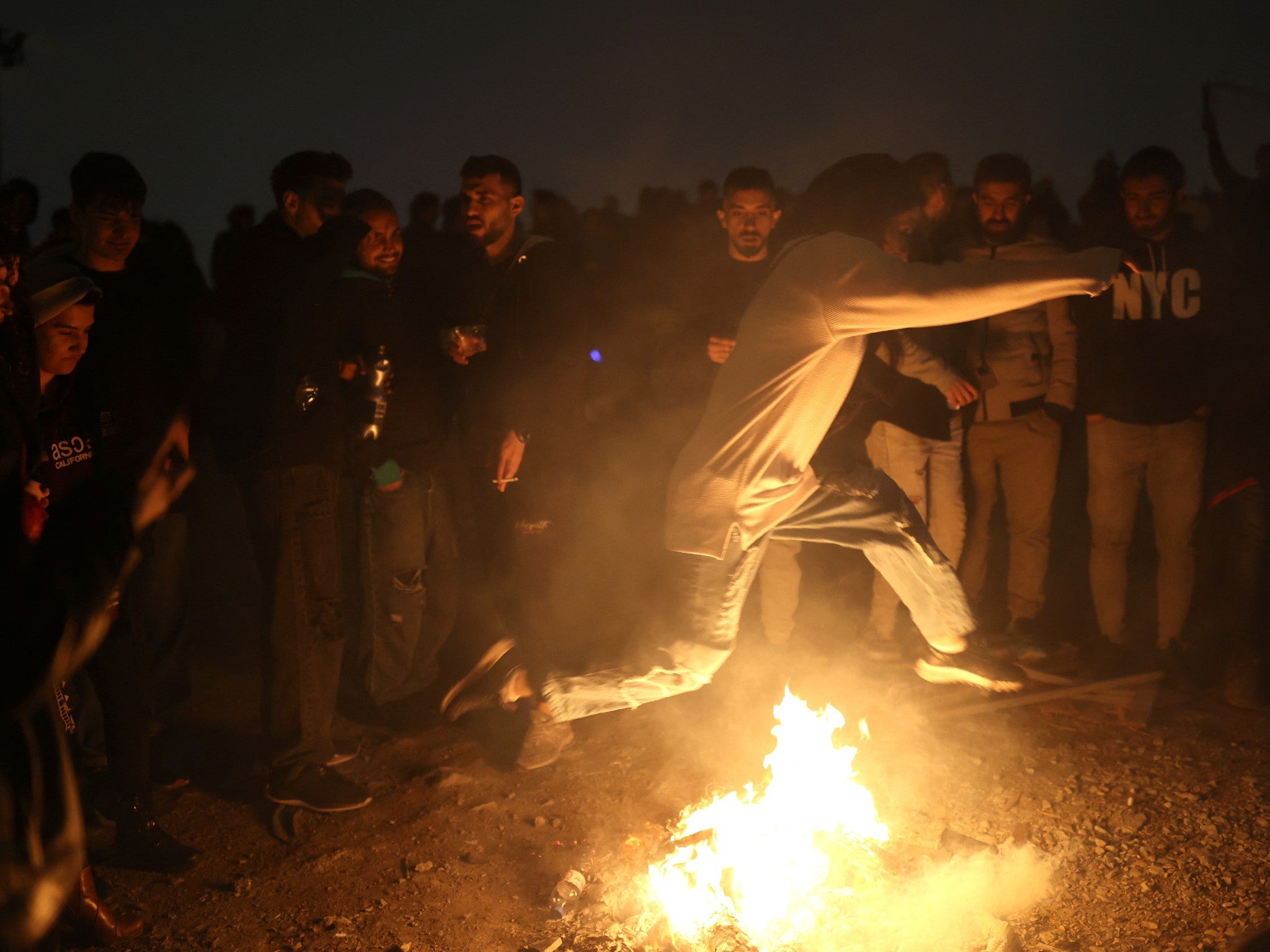Red Wednesday: Anti-government protests erupt across Iran during celebration of fire festival
Activists have called on Iranians to use the annual nighttime pre-New Year celebrations to stage demonstrations

A wave of anti-government protests erupted in Iran on a popular holiday celebrated with fireworks.
Iranians across the country marked the Zoroastrian holiday of “Red Wednesday” by tossing fireworks at security forces, throwing hijabs into bonfires, singing anti-government songs and chanting slogans against supreme leader Ali Khamenei.
“This year is a year of blood,” a boisterous crowd gathered in the northern Iranian city of Rasht chanted. “Seyed Ali [Khamenei] will be overthrown.”
Red Wednesday begins on the final Tuesday night of the Persian calendar year, and is often celebrated by setting off fireworks or jumping over bonfires while chanting “My yellow is yours, your red is mine” – invoking the replacement of ills with warmth and energy. It is a ritual that often leads to injuries. The state-run IRNA news agency said 26 people were killed and more than 4,000 injured in accidents involving bonfires and fireworks linked to the festival over the past three weeks. Last year, before the latest protests, 19 people were killed and 2,800 injured in the same period.
It’s one of two holidays with pre-Islamic roots that are still observed each year in the Islamic Republic, the other being a picnic day in early April. Both offer a rare opportunity for Iranians to dance and celebrate in public, something authorities usually frown on.
The protests, on Tuesday night and into early Wednesday, are a continuation of the wave of unrest sparked by the death in custody of Mahsa Amini six months ago. The 22-year-old’s death following her arrest by the morality police sparked an outcry, both within Iran and the wider international community. The surge of opposition has bridged Iran’s ethnic, sectarian, regional and social cleavages, posing one of the biggest challenges yet to the clerical regime in its 44 years. More than 400 people have been killed in the crackdown.
Facing intensive repression that has led to smaller turnouts, activist leaders inside the country had previously called on protesters to avoid the streets for now. But anger at the country’s political repression and economic failures has been boiling beneath the surface. Students, professors and others recently protested the government’s handling of a series of alleged mass poisonings of girls’ secondary schools.
Activists had called on Iranians to use the annual nighttime pre-New Year celebrations to stage anti-government gatherings, and police had braced for disruptions. Videos showed young Iranians throwing fireworks at security forces passing by on motorcycles.
Officials have sought to tamp down protests with thousands of detentions that rights activists say are leaving prisons dangerously overcrowded.
Judiciary chief Gholamhossein Mohseni Ejei announced on Monday that 22,628 people arrested during recent protests had been pardoned or had their sentences commuted by order of Mr Khamenei.
Subscribe to Independent Premium to bookmark this article
Want to bookmark your favourite articles and stories to read or reference later? Start your Independent Premium subscription today.

Join our commenting forum
Join thought-provoking conversations, follow other Independent readers and see their replies